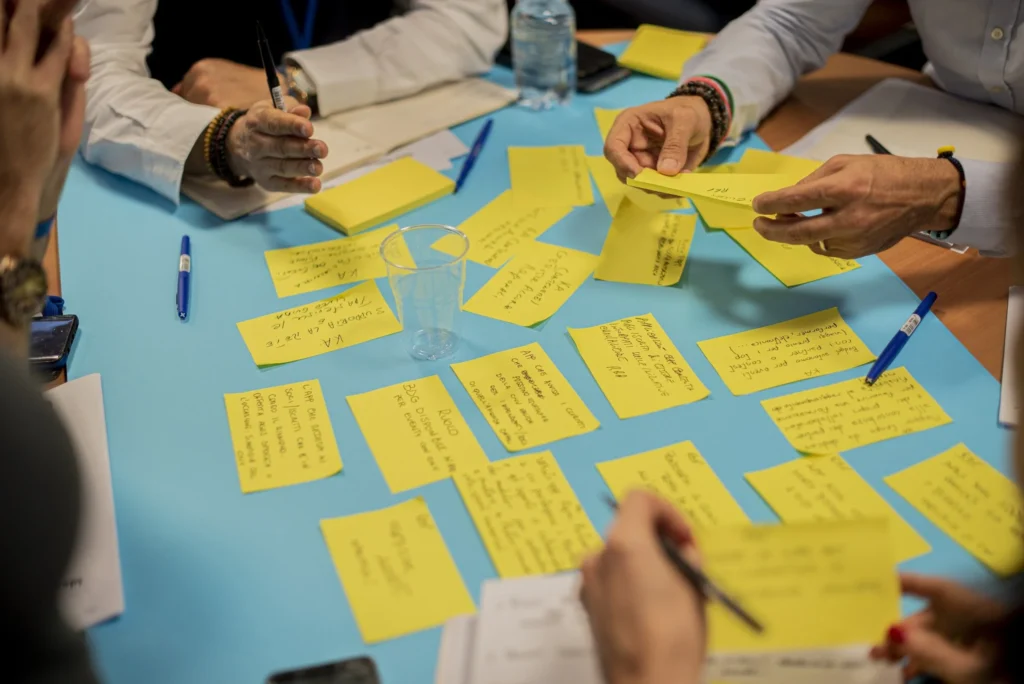Do you believe you or your team have more potential than what’s being shown at work? If yes, what’s the cost of not tapping into that potential more often?
For most, it means a lot of time and money going to waste. That’s a big problem (on many fronts) and coaching is one of the best ways to fix it.
If you lead a team, it’s worth thinking about how to create a culture of coaching that helps everyone reach their full potential. But what does coaching really look like day-to-day? And what skills do leaders need to make it happen?
What is a Coaching Culture?
Traditional leadership often relies on a directive, top down approach. Leaders set the vision, make decisions, and delegate tasks. While this can be efficient, it can also stifle creativity, reduce ownership, and leave team members feeling disconnected or undervalued.
Coaching, on the other hand, is about empowering rather than directing. It means asking more than telling, listening more than instructing, and fostering a sense of autonomy and growth in others. It does not mean stepping back entirely. It means stepping in differently, with curiosity, empathy, and the intention to support others in thinking and acting for themselves.
Building a coaching culture means shifting the unwritten rules, values, norms, behaviours, and practices across the organization. It’s about embedding a coaching mindset into everyday work so that it becomes part of the company’s identity.
The Impact of a Coaching Culture
When leaders embrace a coaching mindset, they do more than improve individual performance — they help transform the culture of the workplace. In a true coaching culture:
- Feedback is ongoing and constructive, not limited to performance reviews
- Team members feel heard, valued, and stretched in ways that align with their personal and professional goals
- Psychological safety is high, encouraging people to raise concerns, challenge ideas, and share diverse perspectives
- Learning is continuous, and mistakes are viewed as opportunities for growth rather than reasons to fear
- Relationships are stronger, with deeper connections between employees, customers, clients, and partners
This is what a culture of inclusion and performance looks like in action. And coaching is one of the most effective ways to build it.
Coaching for Inclusion and Performance
Coaching is also a powerful lever for equity and inclusion. It shifts the dynamic from trying to fix people to focusing on understanding them. Leaders who coach take the time to understand individual strengths, challenges, and identities. They do not assume. They ask. They do not impose. They invite.
This approach helps mitigate bias, challenge assumptions, and build deeper trust. It allows leaders to adapt their style to support different people equitably. That is essential in today’s diverse teams.
It also drives performance. When people feel supported, seen, and challenged in the right ways, they engage more fully. They take ownership. They stretch. They stay.
5 Coaching Skills Every Leader Can Build
You do not need to be a certified coach to bring coaching into your leadership. What you need is a shift in mindset and the commitment to develop a few core skills that make a real difference.
Here are five foundational coaching skills leaders can practice:
- Active Listening
Listening not just to respond, but to truly understand. This means being present, withholding judgment, and paying attention to what is said and what is not. - Asking Powerful Questions
Move beyond yes or no questions to ones that spark insight and reflection. Try asking: What is getting in your way? or What outcome are you hoping for? - Providing Developmental Feedback
Feedback that is not just corrective but constructive. It should be timely, actionable, and grounded in care, designed to help someone grow. - Holding Space
Create the right environment for open, honest conversation. This involves patience, emotional regulation, and resisting the urge to jump in with solutions. - Balancing Support and Challenge
Great leaders do both. They encourage and stretch. They do not shield people from discomfort. They walk alongside them through it.
A coaching culture is not built overnight. It takes intention, practice, and support. But when leaders embrace these skills and apply them consistently, they do not just improve one on one conversations. They shape teams that are more engaged, more inclusive, and more resilient.
That is the kind of culture where people and organizations truly thrive.






















